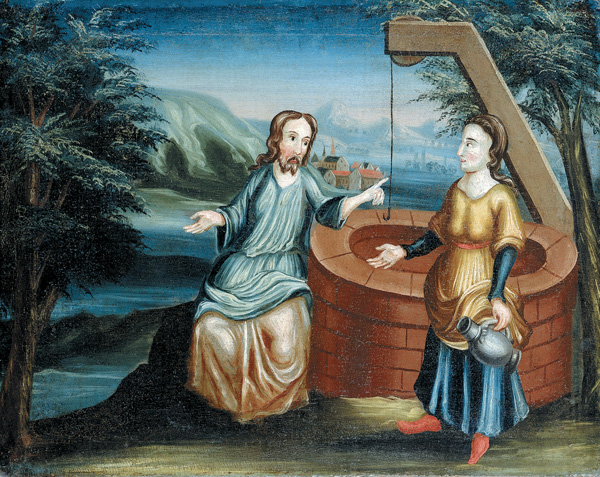Image Details

National Gallery of Art, Washington, DC/Gift of Edgar William and Bernice Chrysler Garbisch 1953.5.91
Tired and thirsty, Jesus rests beside a well in Samaria and asks a local woman to “give [him] a drink” (John 4:7). John’s Jesus is the Son of God, but he also has very human needs.
For John, the encounter at the well provides an opportunity to teach a lesson about eternal life: “Everyone who drinks this water will be thirsty again,” Jesus tells the Samaritan woman. “But whoever drinks the water I shall give will never again be thirsty. The water I shall give will be a spring of water within them, welling up and bringing eternal life” (John 4:13–14).
Jesus encourages the woman to abandon the Samaritan faith (an ancient offshoot of Judaism) and follow him. Buried in their conversation is evidence of John’s accurate, historical knowledge of the people and geography around Jerusalem. Pointing to a nearby mountain, the woman states, “Our ancestors worshiped on this mountain, but you say that the place where people must worship is in Jerusalem” (John 4:20)—a direct reference to the Samaritan belief that Mt. Gerizim, in Samaria, is the place God appointed for his temple.
Mt. Gerizim looms in the background of this anonymous 18th-century American oil painting.
